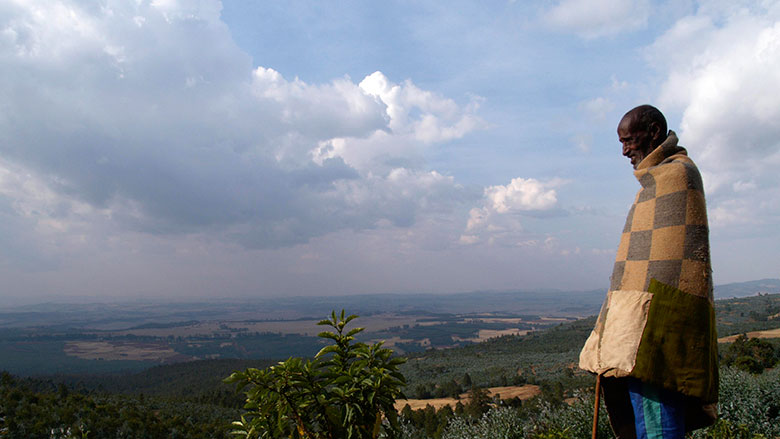Challenge
Natural resource degradation undermines resilience, water and energy security, and agriculture -- which employs over 80% of the population. Throughout Ethiopia, land degradation has lowered productivity and water availability, entrenching food insecurity and rural poverty, and lowering agricultural gross domestic product GDP by 2-3%. Recently, 40% of crop and pasture lands have been severely degraded with another 20% now facing degradation, affecting water availability. Open grazing, firewood demand, and unsustainable crop production all place pressure on land resources. Land tenure insecurity also undermines re-investment in land resources. Climate variability and change are amplifying this complex challenge.
The natural resource base remains the foundation for the vast majority of Ethiopians’ livelihoods as well as sectoral goals such as water provision, irrigation, power generation and household energy, as well as food production. Investment in land resources is vital to build resilience, drive equitable economic growth and protect gains made from that growth among households and communities.
Approach
To address this challenge, SLMP-2 takes an inclusive, community-based integrated watershed management approach. International Development Association (IDA) resources have leveraged additional institutions, investment, and information which helped to scale up landscape restoration in 142 districts. SLMP-2 provides an integrated package of solutions to help break the degradation/poverty cycle such as terracing, closing pastures to regenerate tree and vegetation cover, reforestation, gully reclamation, and woodlots; and provides livelihoods support and climate-smart agriculture including better crop and livestock management practices. SLMP2 also supports land use and watershed planning, land tenure certification, and infrastructure such as small irrigation and rural roads.
These activities have enhanced communities’ resilience to climate risks, and provided them with diverse livelihood opportunities. SLMP-2 finances the innovative community-driven pasture closures which has led to greater livestock productivity, water availability, and the ancillary benefit of children attending school instead of tending their herds. The project is also providing landless youth groups with degraded land to rehabilitate and use.
